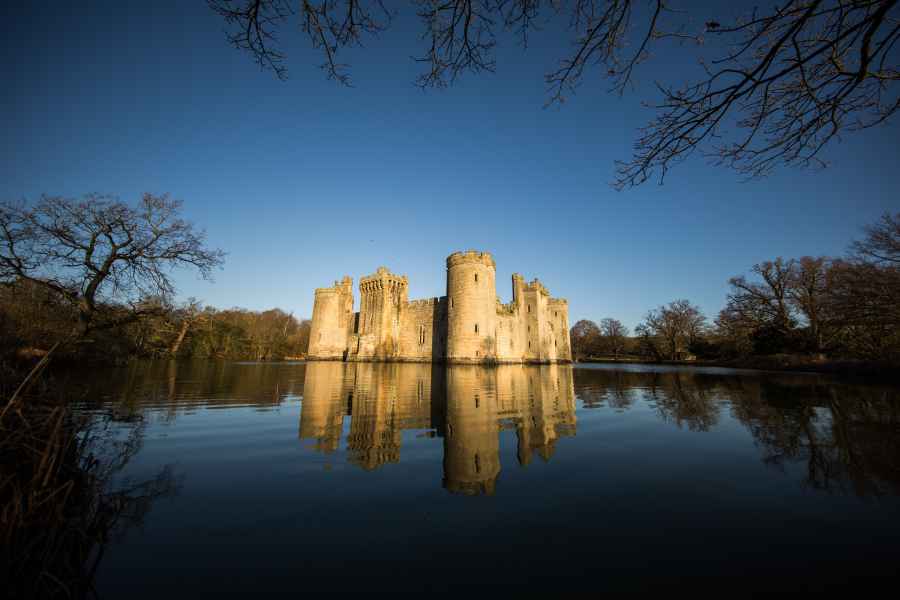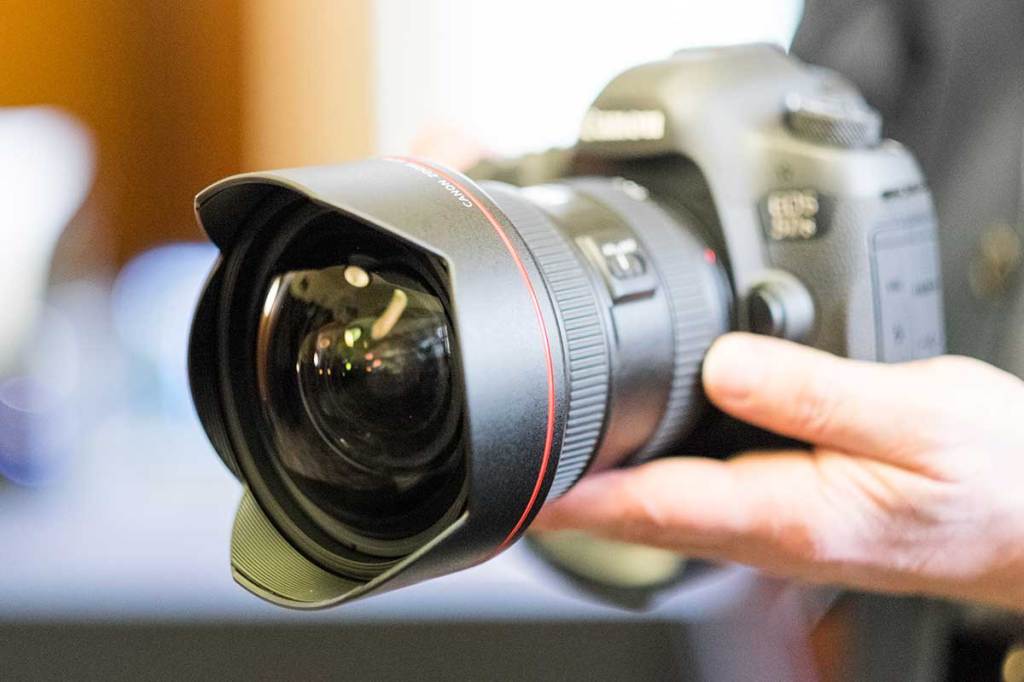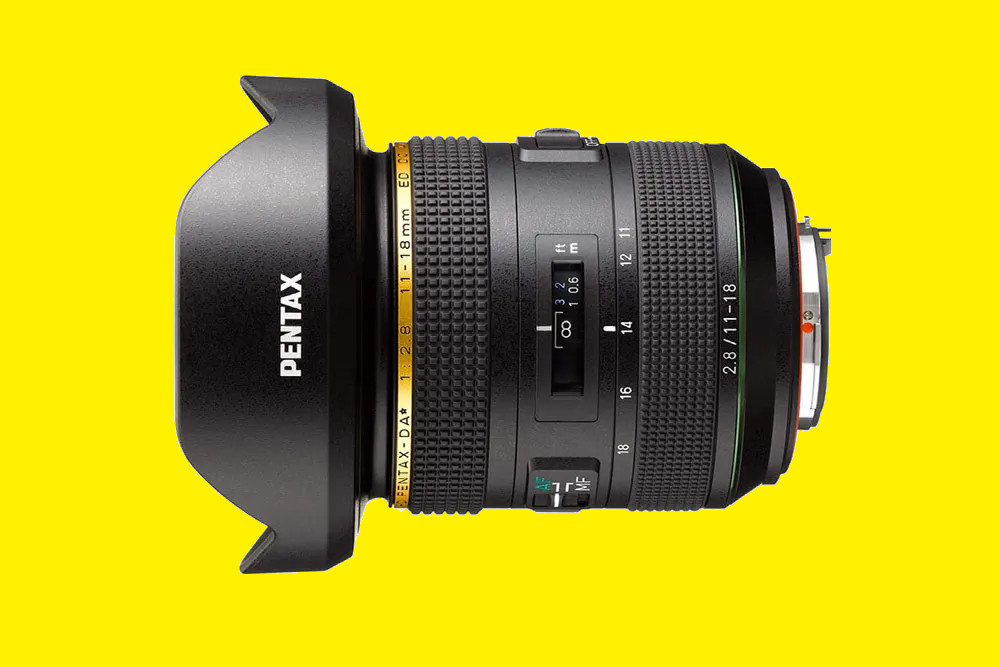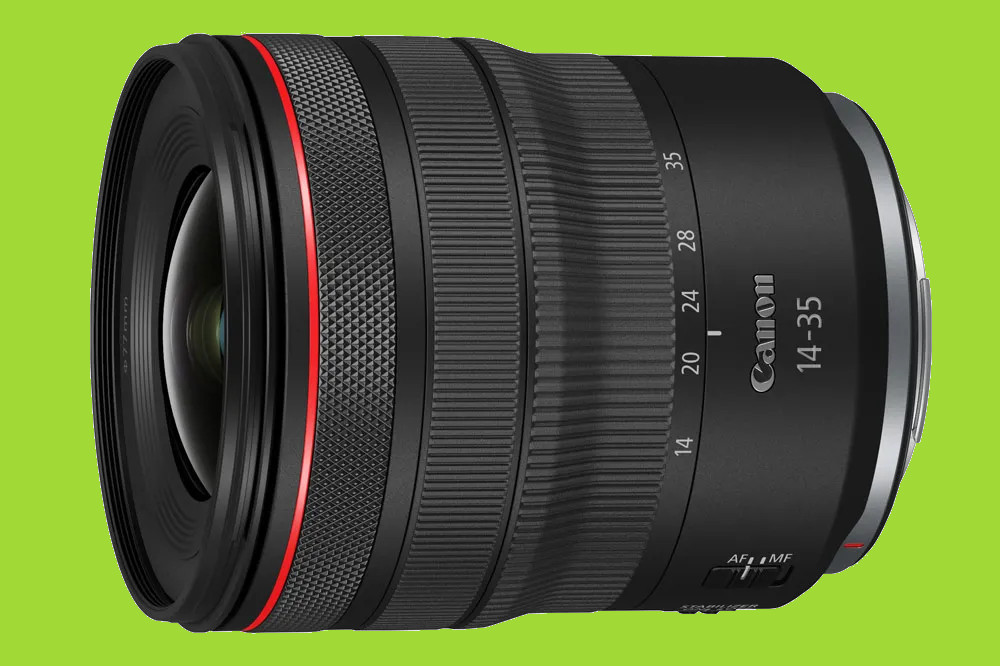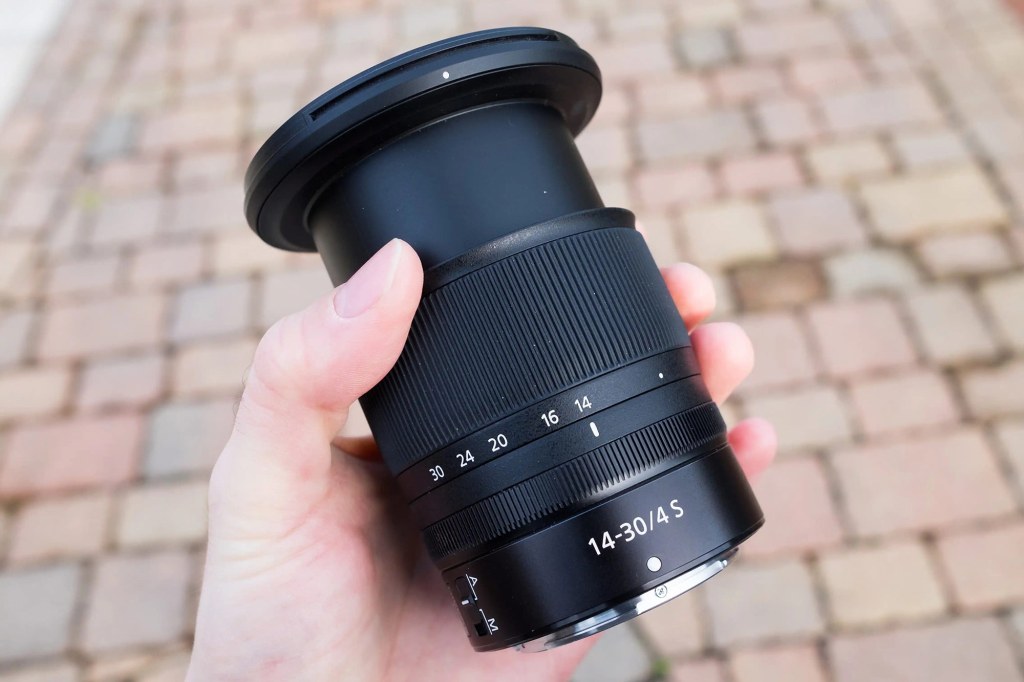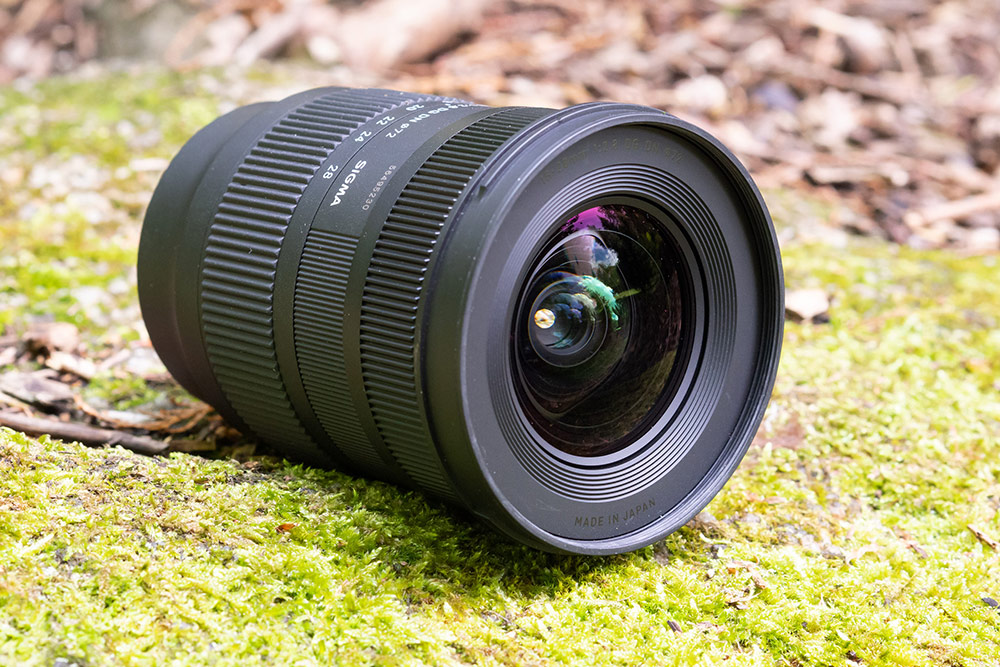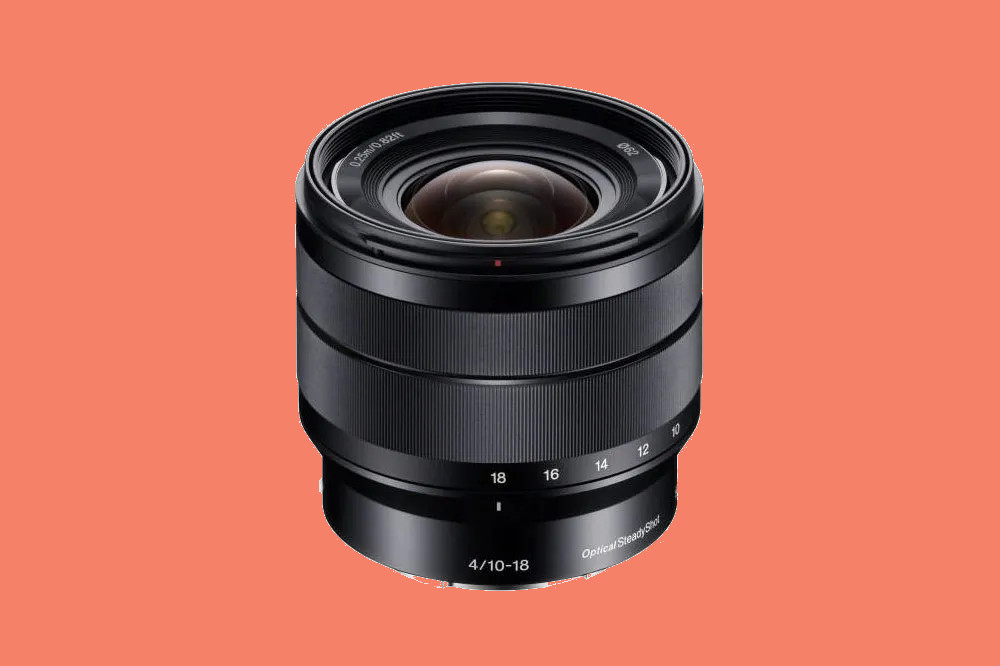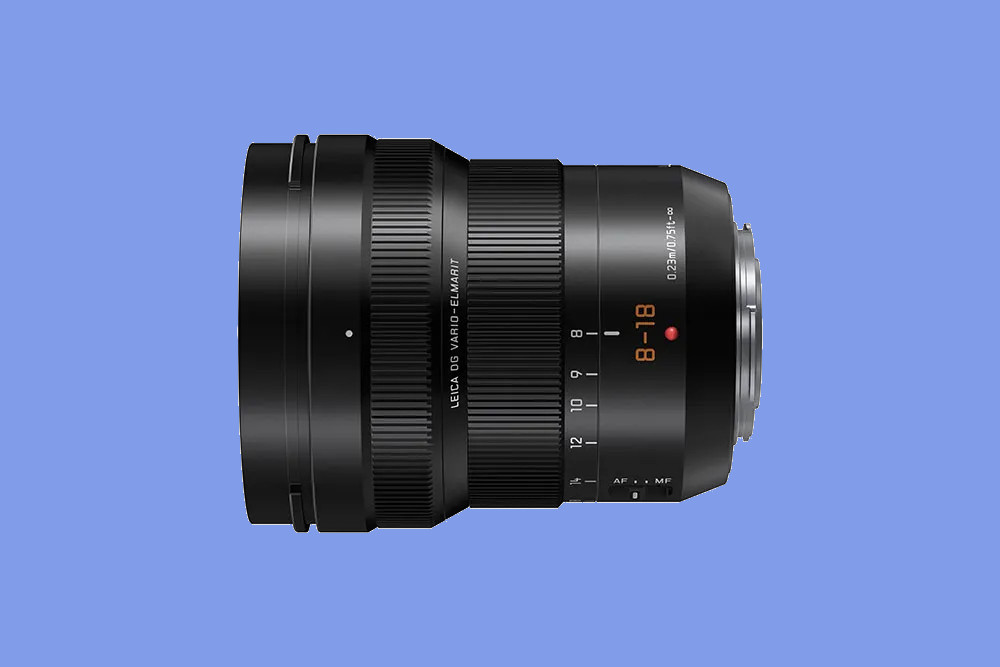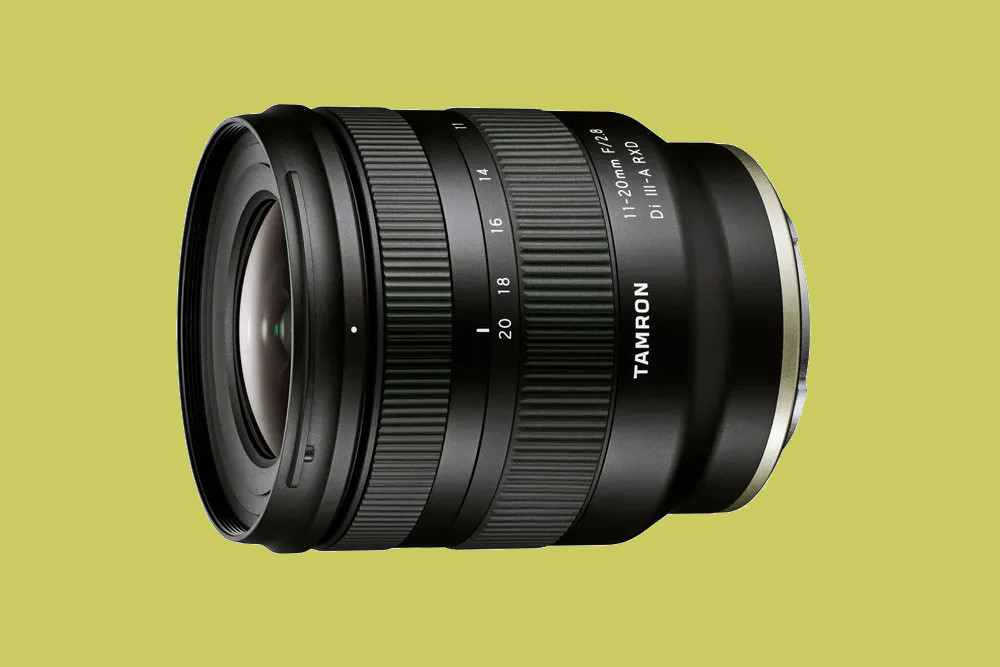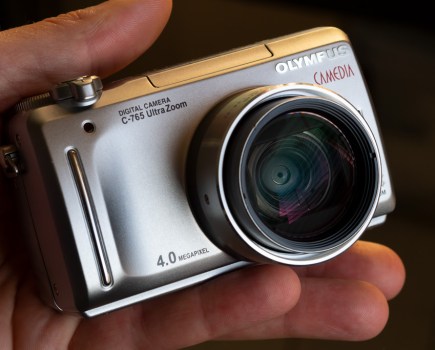Overall, the best type of lens for landscape photography is a wide-angle zoom. Not the only type, but the ultimate. Landscape photography is a varied discipline; plenty of great images in the genre are made on primes and telephotos, too. Consider other useful accessories for photography out in the open, too.
But a wide-angle zoom is the ideal lens for landscape beginners, and the first choice for landscape veterans alike. They are our main focus for this guide.
A wide-angle lens allows you to fit more of a landscape scene into the frame – ideal for capturing sweeping vistas and dramatic skies. Why a zoom and not a prime? Mostly because of the compositional flexibility – landscape imaging generally involves shooting at distance, and is less practical to reframe by moving your feet than it is with subjects that are closer to the camera. Also, the larger apertures of prime lenses aren’t as useful for landscape shooting, as you’ll likely be stopping down to maximise sharpness and depth of field.
Wide-angle zooms have other uses too – they’re great for wedding and event photography, architecture shots (interior and exterior) and real-estate photography, and also provide several advantages for astrophotography. At the bottom of this page are further applications for wide-angle zooms; as well as information about how we tested these lenses, and our key criteria for choosing the best ones.
Read on as we run through the best landscape lenses for every major system and lens mount – and follow up with our guide to the best cameras for landscape photography and expert advice on landscape photography technique.
The best lenses for landscape photography: quick list
Looking for the best deal on landscape lenses? Not only will you find the best lenses for landscape photography, but also some of the best deals. Our ‘Buy now’ buttons are setup to automatically take you to the best prices, from trusted retailers. You’ll also find a list of other retailers below each camera, so you can find the right deal for you.
Best landscape lenses for DSLRs:
- Best Canon APS-C landscape lens: Canon EF-S 10-22mm f/3.5-4.5 USM – buy now
- Best Canon DSLR landscape lens: Canon EF 11-24mm f/4L USM – buy now
- Best Nikon DSLR landscape lens: Nikon AF-S 16-35mm f/4G ED VR – buy now
- Best Pentax landscape lens: Pentax DA* HD 11-18mm f/2.8 ED DC AW – buy now
Best mirrorless landscape lenses:
- Best RF-mount landscape lens: Canon RF 14-35mm f/4 L IS USM – buy now
- Best Nikon Z landscape lens: Nikon Z 14-30mm f/4 S – buy now
- Best professional Nikon Z landscape lens: Nikon Z 14-24mm f/2.8 S – buy now
- Best Sony landscape photography lens: Sony FE 12-24mm F4 G – buy now
- Best L-mount landscape lens: Sigma 16-28mm f/2.8 DG DN C – buy now
- Best Sony APS-C landscape lens: Sony E 10-18mm F4 OSS – buy now
- Best Fujifilm landscape lens: Fujifilm XF 10-24mm F4 R OIS WR – buy now
- Best Micro Four Thirds landscape lens: Panasonic 8-18mm f/2.8-4 ASPH Vario – buy now
- Best Olympus landscape lens: Olympus M.Zuiko Digital ED 7-14mm f/2.8 PRO – buy now
- Best mirrorless APS-C landscape lens: Tamron 11-20mm f/2.8 Di III-A RXD – buy now
Why you can trust Amateur Photographer
We spend many hours testing every product we recommend, in detail, in a variety of situations and shooting scenarios, and only use experts for our reviews, so you can be sure that you’re getting the best products. Find out more about our expert writers.
Best landscape lenses for DSLRs
DSLR users have a vast range of wide-angle zooms to choose from – such that those included in this section are just a fraction of the number in existence! Whether shooting on Canon, Nikon or Pentax DSLRs, you’ll be spoiled for choice, with legacy lenses and newer updated versions plentifully available both new and second-hand. Also, if you’re shooting with Canon RF or Nikon Z mirrorless cameras, remember that all of these lenses can be adapted to work on your EOS R or Z body, usually with full electronic functionality.
Best Canon APS-C landscape lens: Canon EF-S 10-22mm f/3.5-4.5 USM
At a glance:
- Construction: 13 elements, 10 groups
- Weight: 385g
- Mount: Canon EF-S
- Street price: $249 / £619
This wide-angle zoom is designed for Canon cameras with an APS-C sensor, like the Canon EOS 90D or EOS 250D. It gives a view similar to a 16-35mm lens on a full-frame body, so there’s plenty of options for big scenes. And being made to be compact and lightweight at only 83.5×89.8mm and 385g, it’s a great choice for landscape photographers who’re doing extensive hiking.
This doesn’t come at the expense of image quality though, with the lens using a Super Spectra coatings that combats ghosting and flare to keep images clear and contrasty. As a bonus, its minimum focusing distance of 24cm means you can achieve sumptuous foreground textures.
There are many secondhand examples of the lens available. Expect to pay in the region of £175 for one in good used condition or slightly more for an even better example.
Pros:
- Compact and lightweight
- Very good contrast and sharpness
- Close focusing distance
Cons:
- Not weather sealed
Best Canon full-frame landscape lens: Canon EF 11-24mm f/4L USM
At a glance:
- Construction: 16 elements in 11 groups
- Weight: 1,180g
- Mount: Canon EF
- Street price: $2,699 / £2,999
This is the world’s widest rectilinear zoom lens – meaning it renders straight lines to appear straight, unlike a fisheye which will curve them. The Canon EF 11-24mm f/4L USM is an outstanding achievement for how much it can cram into a frame. There really isn’t a lens to match it, by Canon nor anyone else. The image quality is absolutely sublime, and the build of the lens as solid as you’d expect from an L-series optic. And while that bulbous front element precludes the attachment of screw-in filters, it is possible to drop in rear filters via a dedicated adapter from LEE Filters.
Of course, that will add to the already considerable outlay you’ll incur for the Canon EF 11-24mm f/4L USM. There’s no sugar-coating it – this is an expensive lens. The fact that it is still so unique explains why its high price has endured in all the years since its release. To those who can afford it, the Canon EF 11-24mm f/4L USM really is worth it. And not just for Canon DSLR users – there is no equivalent to this lens in the RF range, so EOS R users should definitely consider adapting it (though again, that’ll cost you). If it’s too much, consider the Canon EF 16-35mm f/4L IS USM. It’s still expensive, but you know, less so.
Pros:
- One-of-a-kind rectilinear wide-angle
- Exceptional build quality
- Can take rear filters via adapter
- Truly remarkable image quality
Cons:
- Very expensive
To find out more about how the lens performs, read our Canon EF 11-24mm f/4L USM review.
Best Nikon DSLR landscape lens: Nikon AF-S 16-35mm f/4G ED VR
At a glance:
- Construction: 17 elements, 12 groups
- Weight: 680g
- Mount: Nikon F (FX)
- Street price: $1,097 / £1,149
Launched over a decade ago, this full-frame (FX) lens is still a superb landscape option. It was the world’s first ultra wide-angle zoom to offer optical stabilisation and is rated at four stops, so very useful in a handheld squeeze, while the f/4 aperture is constant throughout the zoom.
The lens provides excellent sharpness and distortion free images thanks to its three aspherical and two extra-low dispersion elements, while Nikon’s legendary Nano Crystal Coating ensures superb clarity.
It also has a nine bladed diaphragm which is rounded to give softer and more natural rendering to landscape details and highlights, and at 680g and 82.5x125mm it can save size and weight in a backpack compared to the faster but larger, heavier and more expensive 14-24mm f/2.8. And still offers great build and weather sealing.
Pros:
- Lovely nine-blade diaphragm
- Very good image quality
- Optical stabilisation
Cons:
- Sharper lenses have come out since
Best Pentax landscape lens: Pentax DA* HD 11-18mm f/2.8 ED DC AW
At a glance:
- Construction: 16 elements, 11 groups
- Weight: 704g
- Mount: Pentax K
- Street price: $1,197 / £1,219
Pentax produces some great lightweight DSLRs for landscaping and models like the K-3 Mark III have superb weather sealing. To match, check out the DA* HD 11-18mm f/2.8 ED DC AW, with its dustproof, weather-resistant construction letting you keep on shooting in atmospheric rain or mist, or close to water without worry.
Its ultra-wide view gives an equivalent 17-27.5mm and despite having a fast f/2.8 aperture it comes in at a reasonable 704g and 90x100mm, keeping load reasonable. It also has a very handy Focus Clamp mechanism which lets users lock the point of focus for multiple exposures, bracketing or starlit scenes.
Pros:
- Tough build
- Fairly light
- Useful focus clamp
Cons:
- Soft in the corners
- One of the pricier Pentax lenses
Best landscape lenses for mirrorless
Regardless of which mirrorless system you use, there are plenty of excellent wide-angle zooms well-suited to landscape shooting. We’ve aimed to cover a broad mix in this section, with options for both full-frame and APS-C sensors, as well as budget-friendly choices. Remember that for landscape shooting we don’t need a fast constant aperture like f/2.8, and can potentially save some cash by opting for a cheaper lens.
Best RF-mount landscape lens: Canon RF 14-35mm f/4 L IS USM
At a glance:
- Construction: 16 elements, 12 groups
- Weight: 540g
- Mounts: Canon RF
- Street price: $1,299 / £1,599
If you’ve moved to Canon’s stunning RF-mount cameras and want a lightweight full frame wide-angle zoom, look no further than the RF 14-35mm f4 L IS USM; a lens that really shows the benefits of the new system. The 14mm end adds incredible drama to landscapes, but step into the zoom and there’s plenty of scope for tighter framing.
With a constant f/4 aperture, it still has low-light potential, while the optical construction is exemplary with three aspherical and three ultra-low dispersion elements giving superb sharpness and distortion control.
For working handheld, there’s a highly effective 5.5-stop Image Stabilizer that will increase to a heady 7 stops when fitted to a EOS-R camera with IBIS. Weighing 540g and measuring 84.1×99.8mm it’s highly portable and weather sealed, too. Those with a higher budget may also want to consider the Canon RF 15-35mm f/2.8L IS, though be warned this lens is more expensive and heavier than the 14-35mm. It’s worth it if you’re doing astro or night work, but for most landscapes, the 14-35mm is the more balanced and better choice.
For more Canon RF-mount lens options, take a read of our Best Canon RF mount lenses article.
Pros:
- Very effective stabilisation
- Weather sealed
- Superb sharpness
Cons:
- Expensive
See more details on the Canon RF 14-35mm f/4 L IS USM
Best Nikon Z landscape lens: Nikon Z 14-30mm f/4 S
At a glance:
- Construction: 14 elements, 12 groups
- Weight: 485g
- Mount: Nikon Z
- Street price: $1,347 / £1,349
Perfectly illustrating the appeal of Nikon’s excellent mirrorless Z Series, the Nikon Z 14-30mm f/4 S brings superb image quality in a package that’s far smaller and lighter than its FX forebears. It weighs only 485g, measures 89x85mm thanks to a retracting design and is the widest Nikon full frame lens to allow screw-on filters, taking 82mm models.
As one of the Z Series’ S line it also has top-notch optics, with no less than four extra-low dispersion and four aspherical elements, plus Nikon’s anti-reflective Nano Crystal Coat.
There’s no optical image stabilisation, but all the full-frame Z cameras have that in the body, keeping the lens’s footprint even smaller. And if you’re shooting landscapes in harsh conditions or poor weather, it’s weather sealed against drips and dust.
For more Nikon Z mount lens options, take a read of our best Z Mount lenses for Nikon guide.
Pros:
- Excellent optical quality
- Weather sealed
- Allows screw-on filters
Cons:
- Some noticeable vignetting
Read our review of the Nikon Z 14-30mm f/4
Best professional Nikon Z landscape lens: Nikon Z 14-24mm f/2.8 S
At a glance:
- Construction: 16 elements, 11 groups
- Weight: 650g
- Mount: Nikon Z
- Street price: $2,497 / £2,379
If you want the best of the best with less concern for cost-saving, then the Nikon Z 14-24mm f/2.8 S should appeal. The ‘S’ designation means it’s a premium Z-mount lens, designed for serious enthusiast and professional users who don’t want to compromise on optical quality. And as such, it delivers – in our review, we found the Nikkor Z 14-24mm f/2.8 S to be capable of producing images with absolutely stunning sharpness, in a range of situations.
What’s more, it’s both lighter and more compact than pairing the Nikon AF-S 14-24mm f2.8 G with an adapter, making it a good excuse for Z-mount users to go all in and opt for the native lens. While there is some distortion evident if you leave it uncorrected, there’s no reason you ever would leave it uncorrected, with Nikon’s automatic correction profiles ready and able to swoop in and take care of matters.
If you’re a Nikon user and want to find out much more about Nikon Z-mount lenses, take a read of our Best Z Mount lenses for Nikon article.
Pros:
- Exceptional image quality
- Lighter than F-mount equivalent
- Customisable control ring
Cons:
- Very expensive
- Control ring can be over-sensitive
Read our review of the Nikon Z 14-24mm f/2.8 S
Best Sony landscape photography lens: Sony FE 12-24mm F4 G
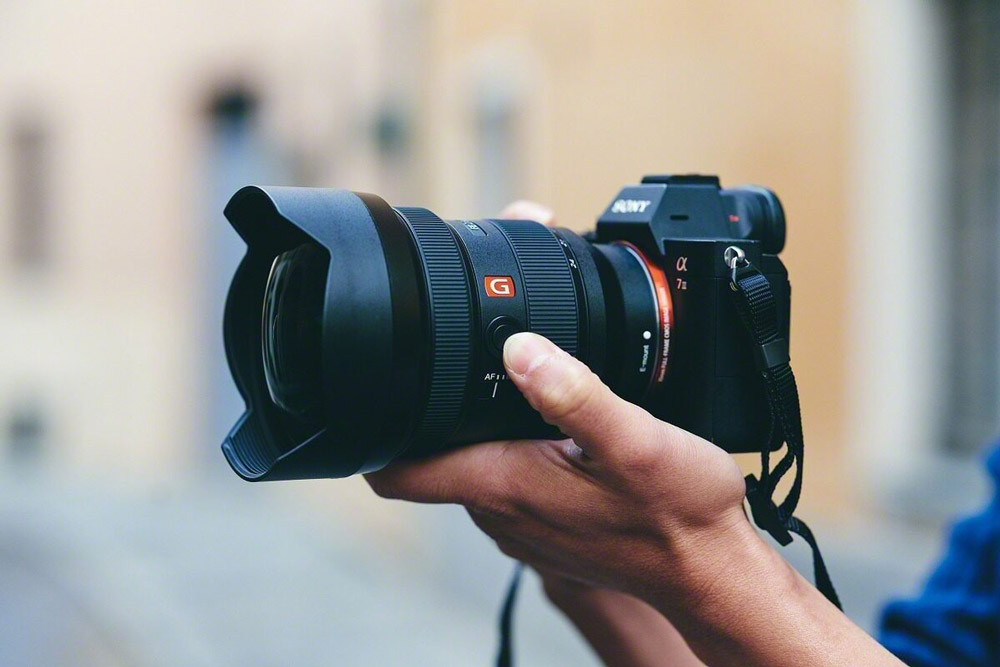
At a glance:
- Construction: 17 elements, 13 groups
- Weight: 565g
- Mount: Sony FE
- Street price: $1,773 / £1,399
Offering the widest view of any Sony full-frame wide-angle zooms, you might expect the FЕ 12-24mm F4 G to be big and heavy, but not a bit of it. Like Sony’s exemplary Alpha cameras this is a lens built with a low profile, but still offers peak quality via its four aspherical, one super extra-low dispersion and three extra-low dispersion elements, plus a Nano AR coating to suppress reflections.
It won’t take front filters, so an adapter holder is required, and though there’s no optical image stabilisation, that comes as standard in the Alpha bodies. The f/4 aperture brings some starry-sky possibilities, and at 565g and 87х117.4mm it’s a great option when space is tight, while its all-weather construction means you can keep shooting in some pretty foul conditions.
Pros:
- Incredibly compact for its type
- All-weather construction
- Excellent image quality
Cons:
- Won’t take filters
Read our review of the Sony FE 12-24mm F4 G lens
Best L-mount landscape lens: Sigma 16-28mm f/2.8 DG DN C
At a glance:
- Construction: 16 elements, 11 groups
- Weight: 450g
- Mount: L
- Street price: $889 / £799
Designed for full-frame Sony E-mount and L-mount cameras, the 16-28mm f/2.8 DG DN C is an exceptionally small, light, fast and versatile wide-angle zoom.
It promises very low distortion and edge-to-edge sharpness, via five FLD and four aspherical lens elements, and uses an internal zoom mechanism, there’s no extension of the front element, perfect for use with polarising filters or holders.
It takes an affordable 72mm fit for filters. The lens is backpack ready at just 100.6mm long and weighs only 450g, while offering dust and splash resistance. We reviewed this lens recently, and were impressed more than anything by the sheer value for money it offers. Landscape shooters using L-mount or full-frame E-mount cameras really should give this lens serious consideration. Its sharpness is great right across the frame, and it’s physically well-balanced, too.
Pros:
- Excellent value
- Lightweight and portable
- Very good sharpness
Cons:
- No aperture ring
- Not fully weather sealed
Read our full Sigma 16-28mm f/2.8 DG DN C review
Best Sony APS-C landscape lens: Sony E 10-18mm F4 OSS
At a glance:
- Construction: 18 elements, 8 groups
- Weight: 225g
- Mount: Sony E
- Street price: $416 / £359
If you shoot landscapes on a Sony mirrorless camera with an APS-C format sensor like the A6400 or A5100, you’ll want an equally small, lightweight but dependable wide-angle zoom. The 10-18mm F4 OSS is just that, offering a streamlined design that’s still weather sealed. At 225g and 70х63.5mm it’s genuinely pocket sized, so can be brought along as the accompaniment to a standard zoom, and it takes 62mm filters and adapter rings, which keeps space – and cost – down, too.
Its constant aperture means shutter speed and ISO can be kept consistent across the 15-27mm equivalent range, perfect for manual working, and it has a four-stop optical stabiliser for hasty handheld landscapes if required.
Pros:
- Very small and light
- Constant f/4 aperture
- Four-stop stabiliser
Cons:
- Not weather sealed
- Corner sharpness so-so
Best Fujifilm landscape lens: Fujifilm XF 10-24mm F4 R OIS WR
At a glance:
- Construction: 14 elements, 10 groups
- Weight: 385g
- Mount: Fujifilm X
- Street price: $999 / £879
Recently updated to include weather sealing, an upgraded aperture ring and more effective stabilisation, the XF10-24mm F4 R OIS WR is our pick of wide-angle zooms for X Series landscapers.
With an equivalent view of 15-36mm it’s a highly versatile package and gives a constant f/4 aperture across the range. The updated aperture ring has a lock to prevent accidental shifts in the diaphragm, while it Optical Image Stabilizer gets an additional stop over the previous 10-24mm model, and will go higher with IBIS-equipped X Series bodies like the X-T4 and X-H2S.
At 77.6х87mm and 385g it’s highly portable, but that doesn’t mean any compromise in optical quality with four aѕрhеrісаl and four extra-low dispersion elements. While this is a fairly minor upgrade on the previous version of this lens, as we pointed out in our review, landscape photographers will appreciate the addition of weather-sealing, which justifies the extra cost outlay.
Pros:
- Weather sealed
- Excellent image quality
- Optical Image Stabilizer
Cons:
- On the pricey side
- Low frequency clicking of the diaphragm blades
Read our Fujifilm XF 10-24mm F4 R OIS WR review
Best Micro Four Thirds landscape lens: Panasonic 8-18mm f/2.8-4 ASPH Vario
At a glance:
- Construction: 15 elements, 10 groups
- Weight: 315g
- Mount: Micro Four Thirds
- Street price: $799 / £899
Covering a range of 16-36mm in old money (a.k.a. in full-frame 35mm terms), the Panasonic 8-18mm f/2.8-4 gives some superb low-light landscape options for Micro Four Thirds shooters, while sticking to all the things that make the format so attractive for adventure photography.
At 315g and 73x88mm it’s bag or pocket friendly, but also weather sealed. The lens has an optical construction of 15 elements іn 10 groups with one aspherical extra-low dispersion, three regular аѕрhеrісаl, two extra-low dispersion and one ultra-high refractive indех elements in the light path, all of which adds up to some beautifully sharp and distortion free results.
The minimum focus of 23cm also brings foreground details like flowers and sandy patterns up close for landscapes.
Pros:
- Excellent sharpness
- Good in low light
- Very portable
Cons:
- Premium price tag
- Max aperture not constant
Read more on the Panasonic 8-18mm f/2.8-4 ASPH Vario. lens
Best Olympus landscape lens: Olympus M.Zuiko Digital ED 7-14mm f/2.8 PRO
At a glance:
- Construction: 14 elements, 11 groups
- Weight: 534g
- Mount: Micro Four Thirds
- Street price: $1,400 / £1,249
A smart, lightweight evolution of Olympus’s original Four Thirds wide-angle zoom, the ED 7-14mm f/2.8 PRO is a slip of a thing in comparison. At 534g and 78.9×105.8, it’s larger than some options, but still highly portable, with the benefit of a fast f/2.8 aperture setting throughout, which makes a great choice for nightscapes.
The lens delivers splendid sharpness from its 14 element, 11 group construction, and its seven bladed aperture gives beautiful sunstars.
Weatherproofed, though with a protruding front element that needs a bit of caution in use, and an adapter to mount filters, one of this lens’s trump cards is its incredible minimum fосuѕing dіѕtаnсе of just 20сm from giving some superbly exaggerated foregrounds.
Pros:
- Excellent sharpness
- Seven-blade aperture
- Constant f/2.8
Cons:
- Vulnerable protruding front element
- Sharpness suffers in corners
Read our full review of the Olympus M.Zuiko Digital ED 7-14mm f/2.8 PRO lens
Best mirrorless APS-C landscape lens: Tamron 11-20mm f/2.8 Di III-A RXD
At a glance:
- Construction: 12 elements, 10 groups
- Weight: 335g
- Mounts: Sony E, Fujifilm X
- Street price: $659 / £649
A premium lightweight wide-angle zoom designed for Sony E-Mount APS-C mirrorless cameras, and more recently made available for Fujifilm X, the Tamron 11-20mm f/2.8 Di III-A RXD offers a great mix of image quality image, portability and performance.
The constant f/2.8 keeps settings consistent throughout the zoom and is great for low-light work, while the lens uses two glass moulded aspherical elements, as well as one extra-low dispersion and two low dispersion elements for edge-to-edge sharpness.
Despite all this – and being weather sealed – it’s only 335g in weight while measuring 72х86.2mm. And for those who want closeups, there’s an impressive minimum focus of just 15cm at 11mm giving a magnification of 0.25x.
Pros:
- Very light and weather sealed
- Does well in low light
- Close focusing distance
Cons:
- No stabilisation
- Pricey for third party
Read the full spec of the Tamron 11-20mm f/2.8 Di III-A RXD
How to choose the best lens for landscape photography
Wide-angle zooms come in all shapes, sizes and prices, so it can be difficult to know which to choose. Important to landscapers are light weight, ease of use, and image sharpness, and you will decide on the relative importance of these. Light weight for longer walks, ease of use because you may be wearing gloves (a good control ring is your friend here), and image sharpness because you’ll often be stopping down to capture as much detail as possible.
It’s also worth looking out for weather sealing, so that a little rain doesn’t put a premature end to your whole shoot. Also, pay attention to the filter compatibility. Many ultra-wide lenses can’t take front-mounted filters at all because of their bulbous front element, while others will require ones with a sizeable filter thread. Filters can be really important to landscape work, so it’s worth thinking about the filter setup when buying a lens. Check out our guide to the best filters for landscape photography for an idea of the kinds you might use.
Wide-angle zooms don’t always have the widest maximum apertures, which generally isn’t a problem as you’ll likely be working at narrower apertures for landscapes anyway. However, if you’re prepared to pay extra, you can get large-aperture wide-angle zooms for working in low light. There are also a few features you probably don’t need to worry about, like image stabilisation, as landscape photographers tend to work on tripods.
Other uses for wide-angle zooms
While wide-angle zooms are often chiefly associated with landscape photography, they have plenty of other uses that can make them a worthy addition to a kit bag. Below are a few of the other key applications for wide-angle zooms.
Real estate photography
When photographing real estate, you need to be able to fit a lot into the frame. You want to be able to capture a room in its entirety, whether it be extremely cramped or quite spacious. A wide-angle zoom will allow you to easily move between both scenarios and capture high-quality images of a property, inside and out. The high optical quality and low distortion of rectilinear wide zooms also mean you should be able to capture relatively naturalistic images that don’t provide a misleading picture of a room’s actual proportions. It may seem like an expensive outlay for real estate photography – but if you’re going to be photographing property regularly, it’s one worth making.
Weddings / event photography
A good wide-angle zoom can be a lifesaver at a wedding. They’re hugely useful for those all-important group shots, meaning you can make sure you get every guest into the picture. For more general use, they’re a good way to create pictures that convey a sense of the scale of the event, cramming lots of guests into the frame to emphasise how many people are attending. Similarly, they work well for general events photography – and while a prime can do a similar job, a zoom will make you much more versatile on your feet.
Architecture
Wide-angles are terrific for architecture, whether you’re shooting interiors or exteriors of buildings. A good wide-angle will allow you to fit the entirety of a large building in the frame even when you’re relatively close, while also being handy if you’re shooting in a cramped room. Again, the rectilinear zoom should help to produce a reasonably naturalistic image that doesn’t require too much correction in software.
Astrophotography
As well as allowing you to capture magnificent wide vistas of the night sky, wide-angle zooms have another quite specific use when it comes to astrophotography. The wider focal length means you can use longer shutter speeds before the stars start to trail as they move across the sky. Many astrophotographers use what’s called the ‘500 rule’, which states that the maximum shutter speed you can use before stars start to trail is 500 divided by your lens’ focal length. So, a 50mm lens would allow for a maximum shutter speed of 10 seconds. If, however, you’re using the Canon EF 11-24mm at its widest focal length of 11mm, the 500 rule would allow for a maximum shutter speed of 45 seconds, which is a significant advantage. There’s more to it of course (see our guide to the best lenses for astrophotography), but as a general rule, wider lenses will give you an easier ride when it comes to astrophotography.
How we test lenses
We review lenses from the perspective of choosing one for its photography and video performance, so we test every lens for all aspects of image quality: sharpness, contrast, background blur and bokeh, as well as other image qualities that are pertinent to assessing a lens type. We look for optical aberrations such as chromatic aberration and distortion. We test focus performance for both accuracy and speed (in different lighting conditions), as well as how the lens delivers or renders images. This is tested in a range of shooting scenarios designed to expose lens characteristics, but we also examine how it performs in real world use in diverse shooting situations.
Beyond the pure optical performance of the lens, we also assess the lens’ physical qualities, such as its design, how well it is made, how easy it is to handle, and whether it offers any unique or interesting features worth mention. Beyond image quality certain lenses can be assessed for how they make you feel, or how they may affect a camera system set-up for portability, compactness, weight etc.
Text by Kingsley Singleton, with contributions from Jon Stapley & Michael Topham
Once you’ve found the best lens for your landscape photography, have a look at more guides in the latest buying advice.
Further reading
Best cameras for landscape photography
Top filters for landscape photography
Tripods for landscape photography
The top 20 best landscape photographs
Complete guide to landscape photography

